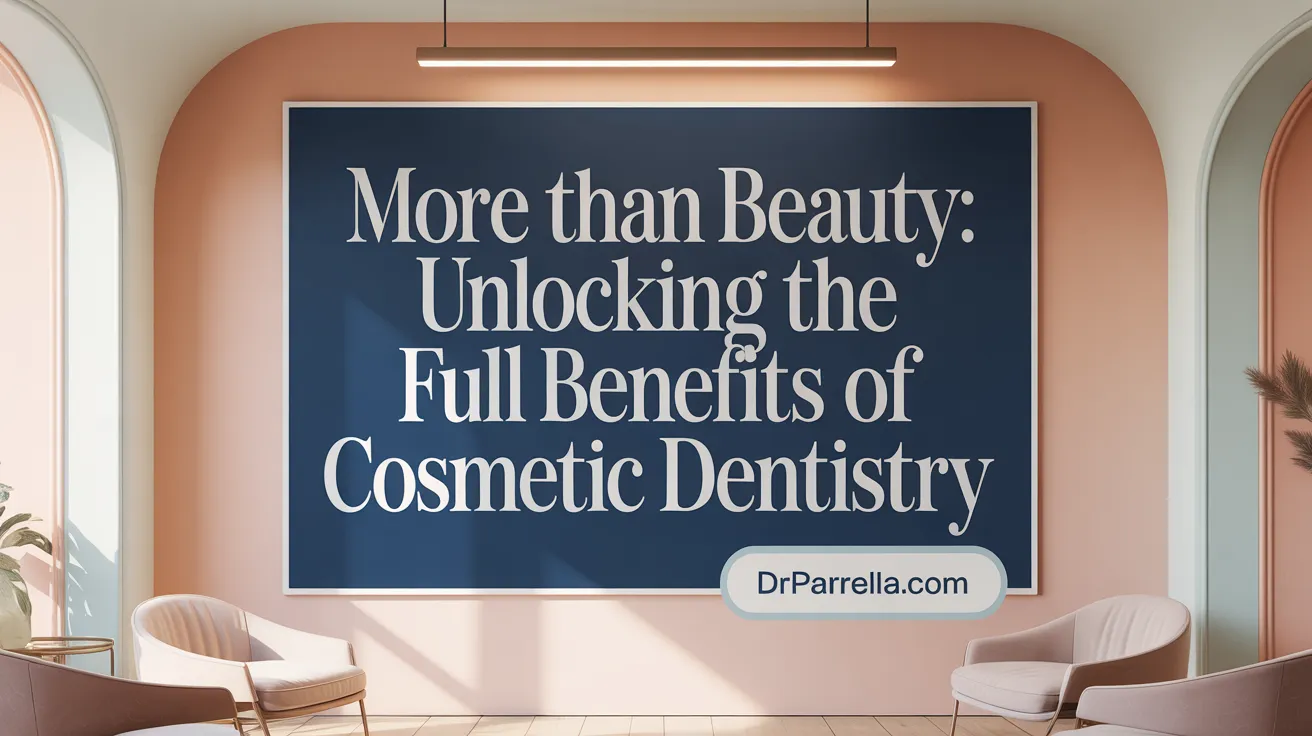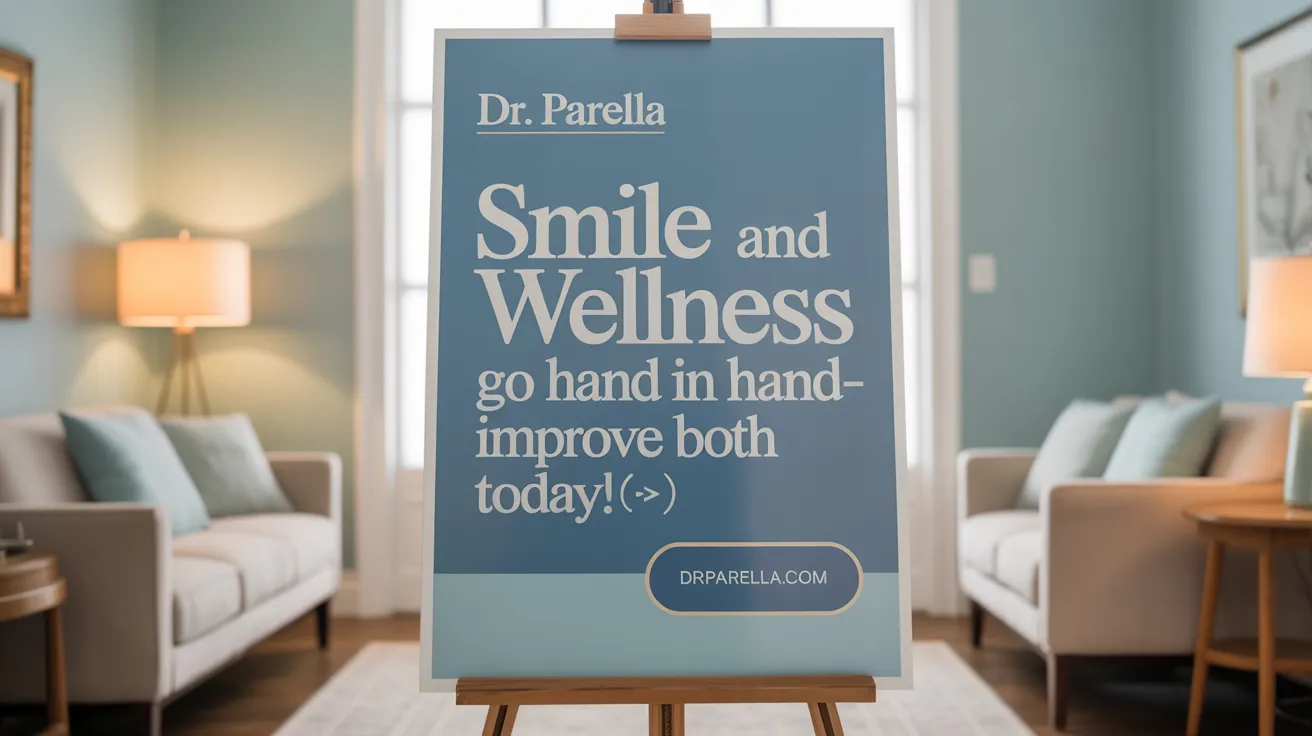The Transformative Power of a Smile
A radiant smile does more than light up a room—it can transform a person's confidence, health, and quality of life. Cosmetic dentistry offers a range of treatments designed not only to enhance the appearance of teeth and gums but also to improve oral function and overall well-being. This article explores the real benefits of cosmetic dentistry, diving into the procedures available, their impact on patients' lives, and what to expect throughout the journey to a renewed smile.
Comprehensive Benefits of Cosmetic Dentistry: More Than Just Aesthetic Enhancements
 Cosmetic dentistry provides a wide range of advantages that extend beyond simple appearance improvements. Primarily, it enhances the aesthetic appeal of your smile through procedures such as teeth whitening, veneers, bonding, and contouring. These treatments effectively address common flaws like stains, chips, gaps, and uneven teeth, leading to a more youthful and attractive look.
Cosmetic dentistry provides a wide range of advantages that extend beyond simple appearance improvements. Primarily, it enhances the aesthetic appeal of your smile through procedures such as teeth whitening, veneers, bonding, and contouring. These treatments effectively address common flaws like stains, chips, gaps, and uneven teeth, leading to a more youthful and attractive look.
But the benefits are not limited to aesthetics. Cosmetic dentistry also offers significant functional improvements. Correcting misaligned or missing teeth with options like crowns, implants, and orthodontics (such as Invisalign) can make chewing and speaking easier and more comfortable. Properly aligned teeth distribute biting forces evenly, reducing wear, jaw pain, and the risk of further damage.
In addition to functionality, these procedures deliver health benefits by aiding in the prevention of oral diseases. Restorative choices such as crowns and implants strengthen damaged teeth, preventing decay and preventing issues like gum disease. Straightening teeth simplifies oral hygiene routines, making it easier to clean hard-to-reach areas and decreasing plaque buildup, which lowers the risk of cavities and periodontal disease (source).
Looking at the long-term perspective, cosmetic dentistry can significantly improve overall oral health. It helps maintain the integrity of the jawbone, prevents shifting of neighboring teeth, and protects against future dental problems. Many cosmetic treatments have lasting results, especially with proper maintenance, enabling patients to enjoy their improved smile and better health for years (source).
Furthermore, the emotional and psychological effects of cosmetic dentistry are profound. A more confident smile enhances self-esteem, boosts social interactions, and can positively influence personal and professional relationships. Patients often report feeling happier, less anxious about their appearance, and more willing to smile and engage socially after treatment (source).
In conclusion, cosmetic dentistry is a holistic approach that improves not only the look of your teeth but also your overall oral health, functionality, and emotional well-being. Its comprehensive benefits make it a valuable investment in both your health and quality of life.
Popular Cosmetic Dentistry Procedures and Their Advantages
 Cosmetic dentistry offers a variety of procedures designed to enhance the appearance of your smile while sometimes improving oral health. One of the most common procedures is teeth whitening, which effectively removes stains caused by food, beverages, and habits like smoking. Professional whitening can dramatically brighten teeth in about an hour, with results lasting from six months up to three years with proper care.
Cosmetic dentistry offers a variety of procedures designed to enhance the appearance of your smile while sometimes improving oral health. One of the most common procedures is teeth whitening, which effectively removes stains caused by food, beverages, and habits like smoking. Professional whitening can dramatically brighten teeth in about an hour, with results lasting from six months up to three years with proper care.
Veneers are thin shells made of porcelain or composite resin bonded to the front of teeth. They are excellent for correcting chips, gaps, discoloration, and uneven teeth, offering an immediate aesthetic transformation that can last between five to fifteen years. Dental bonding is another popular option that involves applying a tooth-colored resin to repair minor chips, cracks, or stains. Bonding is quick, minimally invasive, and typically lasts five to eight years.
Gum contouring reshapes excess or uneven gum tissue to improve smile symmetry and expose more tooth surface, often resulting in a permanent, natural-looking appearance. Invisalign and other orthodontic options provide discreet solutions for straightening misaligned or crowded teeth, significantly boosting confidence and oral function.
For missing teeth, dental implants serve as durable, natural-looking replacements that support crowns, bridges, or dentures. Crowns are used to restore damaged or decayed teeth, covering them with a material that matches your natural teeth and lasts many years.
The longevity of these results varies—while whitening may fade over months, veneers and crowns can last 5 to 15 years or more with proper maintenance. Regular dental checkups and good oral hygiene are essential for prolonging the lifespan of cosmetic treatments.
Many cosmetic procedures are elective and not covered by insurance, but they can greatly enhance self-confidence and oral health. Although some treatments require ongoing care or replacements, the overall benefits include a brighter, more attractive smile and improved oral function.
The Psychological and Emotional Impact of Smile Transformations

How do smile transformations impact a person's confidence and self-image?
Smile transformations significantly boost an individual's confidence and self-image by enhancing the appearance of their teeth. When people feel good about their smile, they tend to show it more often, which increases positive social interactions and helps create a friendly, approachable persona. A beautiful smile can also lead to greater self-pride and happiness, making individuals more willing to engage in social and professional opportunities. Research indicates that attractive smiles are associated with qualities like intelligence, success, and trustworthiness, often opening doors to new personal and career prospects. Moreover, cosmetic improvements can diminish feelings of self-consciousness and social anxiety, allowing people to express themselves more freely. This newfound confidence often translates into a more optimistic outlook on life and a stronger sense of self-worth.
What psychological and emotional benefits does improving one's smile provide?
Enhancing a smile through cosmetic dentistry delivers profound psychological and emotional benefits. It can increase self-esteem and foster a positive self-image, encouraging individuals to smile more openly and confidently. This can improve social interactions, making others perceive them as more attractive and approachable. A brighter, straighter smile often correlates with feelings of youthfulness and vitality, helping individuals feel more energetic and happier. Additionally, addressing dental insecurities reduces anxiety related to appearance, which can alleviate feelings of embarrassment or shame. These improvements often lead to better mental health by reducing stress and boosting overall happiness. Many find that a radiant smile acts as a catalyst for increased social confidence, facilitating better relationships and professional success. Overall, smile enhancements can significantly elevate mental well-being and quality of life, making them a powerful tool for emotional wellness.
Enhancing Oral Health and Overall Well-Being Through Cosmetic Dentistry

In what ways does cosmetic dentistry enhance oral health and overall well-being?
Cosmetic dentistry contributes significantly to oral health by addressing common dental issues such as misalignment, chips, gaps, and discoloration. Correcting misaligned teeth not only improves the smile's appearance but also makes oral hygiene easier, reducing the accumulation of plaque and lowering the risk of cavities and gum disease. Procedures like crowns and dental implants restore damaged or missing teeth, which strengthens biting ability and helps prevent further deterioration or bone loss in the jaw.
Many cosmetic treatments serve a dual purpose: enhancing aesthetic appeal and protecting the teeth from future problems. For example, veneers shield compromised enamel and prevent further damage, while orthodontic treatments improve bite function and reduce uneven wear.
The benefits extend beyond oral health. There are established links between oral health and systemic health conditions such as heart disease, diabetes, and cardiovascular disease. By improving the condition of teeth and gums, cosmetic dentistry can contribute indirectly to overall health and reduce the risk of related systemic illnesses.
Furthermore, achieving a beautiful, natural-looking smile can boost emotional well-being and confidence. Patients often report increased self-esteem which positively impacts social and professional interactions.
In summary, cosmetic dentistry not only enhances the appearance of the smile but also promotes better oral functionality, helps prevent future dental issues, and supports systemic health—contributing to broader wellness and improved quality of life.
Navigating the Cosmetic Dentistry Journey: Expectations, Risks, and Decision-Making
What should patients expect during the process of cosmetic dental treatments?
Patients considering cosmetic dentistry procedures should prepare for an initial consultation, where a qualified dentist assesses their teeth, discusses aesthetic goals, and reviews treatment options. During this phase, questions about costs, success rates, and recovery are addressed to ensure clear understanding. The procedures range from simple treatments like teeth whitening and dental bonding to more involved options such as veneers, gum recontouring, or orthodontics.
Most treatments require multiple appointments, especially those involving enamel reshaping, veneer placement, or implants. Planning also includes organizing transportation for follow-up visits and understanding post-treatment care instructions. Recovery times vary by procedure, with some, like bonding, allowing immediate return to normal activities, while others, such as gum contouring, may need a few days of rest.
Effective communication with an experienced cosmetic dentist and realistic expectations are crucial. This helps ensure the desired aesthetic results, promotes patient satisfaction, and supports the longevity of the treatment outcomes.
What are the risks, side effects, and recovery considerations associated with cosmetic dental procedures?
Cosmetic dental treatments , although generally safe, come with potential risks such as infection, nerve injury, allergic reactions, and temporary side effects including tooth sensitivity, swelling, or gum irritation. More invasive procedures like dental implants carry additional considerations, such as postoperative swelling, soreness, and the importance of diligent healing care.
Irreversible treatments like veneers may sometimes require replacement if not properly maintained or if damage occurs. Serious complications are rare when procedures are performed by qualified practitioners using advanced technology, but they can include nerve damage or implant failure.
Patients should follow detailed after-care instructions, maintain excellent oral hygiene, and attend follow-up visits to reduce risks. Proper assessment beforehand minimizes likelihood of adverse effects and supports favorable results.
How do different factors influence the choice among various cosmetic dentistry options?
When selecting a cosmetic dental treatment, several factors come into play. The patient’s current oral health status is fundamental; for example, existing decay or gum disease may need addressing before cosmetic procedures. Budget constraints are also significant, as some treatments like veneers are more costly but longer-lasting, whereas bonding is less expensive but shorter-lived.
Aesthetic objectives guide the decision-making process—whitening might be suitable for discolored teeth, while veneers can correct chips, cracks, or misshapen teeth for a more comprehensive overhaul.
Additionally, treatment duration and maintenance requirements influence choices. Options like bonding last 5-8 years, whereas veneers can last 10-15 years with proper care. The patient’s lifestyle, expectations, and willingness to undergo more extensive procedures also affect the best course of action.
A personalized consultation with a proficient cosmetic dentist helps align realistic goals with suitable treatments, considering individual health, financial, and aesthetic factors.
Embracing the Transformative Journey of Cosmetic Dentistry
Cosmetic dentistry is a powerful tool that goes beyond enhancing the beauty of your smile. By combining aesthetic improvements with functional benefits and overall health advantages, it offers a comprehensive approach to oral care and personal well-being. From the array of available treatments tailored to individual needs to the profound psychological uplift that comes with a renewed smile, cosmetic dentistry can improve quality of life profoundly. Anticipating the journey, understanding potential risks, and partnering with skilled professionals ensure that the smile transformation is both safe and satisfying. Ultimately, investing in your smile is an investment in confidence, health, and happiness that shines through every shared smile.
